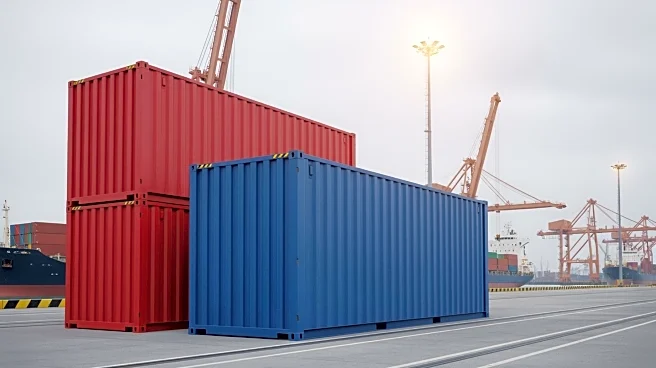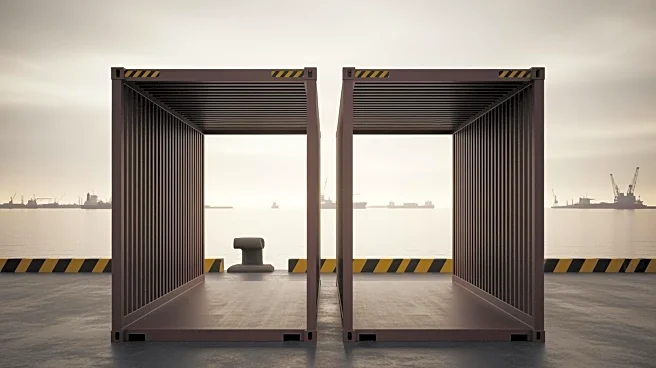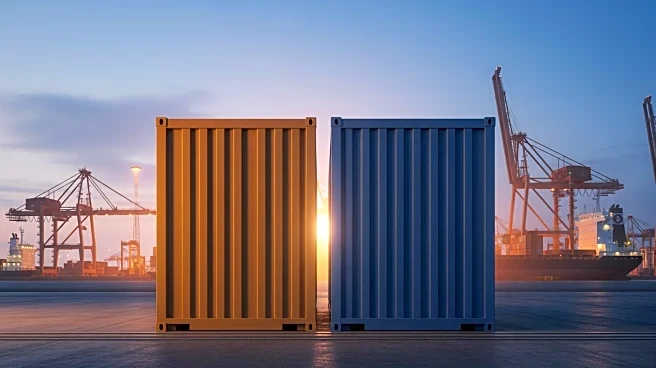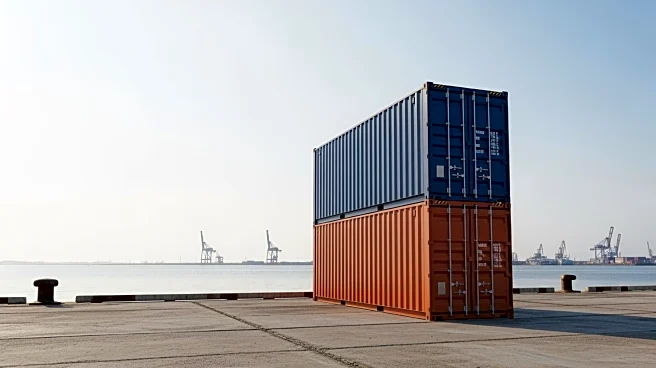What's Happening?
The Port of Los Angeles (POLA) and the Port of Long Beach (POLB) have reported declines in their September volumes. POLA's total volume fell 7.5% annually, with imports decreasing by 7.6%. Despite this, POLA's third-quarter volume was the highest in its
history. POLB also saw a 3.9% annual decline in total volume, with imports down 6.9%. The ports attribute these declines to ongoing trade negotiations and tariffs impacting consumer and business decisions. POLA Executive Director Gene Seroka anticipates further declines in cargo volume due to turbulent negotiations with China.
Why It's Important?
The decline in port volumes reflects the broader impact of trade tensions and tariffs on U.S. logistics and supply chains. As major gateways for international trade, the performance of POLA and POLB is a critical indicator of economic activity and trade dynamics. The ongoing negotiations with China, the U.S.'s largest trading partner, add uncertainty to future trade flows and economic stability. The ports' ability to adapt and maintain efficiency amid these challenges is vital for supporting U.S. businesses and consumers reliant on imported goods.
What's Next?
The ports will continue to monitor trade negotiations and adjust their operations to mitigate potential disruptions. Efforts to enhance supply chain resilience and efficiency may be prioritized, including investments in technology and infrastructure. The outcome of negotiations with China will be closely watched, as it could significantly influence future trade volumes and economic conditions. Stakeholders, including policymakers and industry leaders, may engage in discussions to address trade challenges and explore solutions to support the ports' operations.














